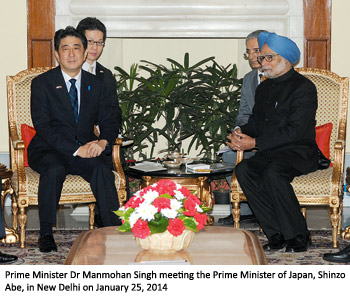INDIAN ARMED FORCES CHIEFS ON OUR RELENTLESS AND FOCUSED PUBLISHING EFFORTS

The insightful articles, inspiring narrations and analytical perspectives presented by the Editorial Team, establish an alluring connect with the reader. My compliments and best wishes to SP Guide Publications.

"Over the past 60 years, the growth of SP Guide Publications has mirrored the rising stature of Indian Navy. Its well-researched and informative magazines on Defence and Aerospace sector have served to shape an educated opinion of our military personnel, policy makers and the public alike. I wish SP's Publication team continued success, fair winds and following seas in all future endeavour!"

Since, its inception in 1964, SP Guide Publications has consistently demonstrated commitment to high-quality journalism in the aerospace and defence sectors, earning a well-deserved reputation as Asia's largest media house in this domain. I wish SP Guide Publications continued success in its pursuit of excellence.
- Indian Air Force Aims for Full Indigenous Inventory by 2047 — Air Chief Marshal A.P. Singh
- General Upendra Dwivedi takes over as the Chief of the Army Staff
- Rajnath Singh assumes charge as Defence Minister for the second consecutive term
- Admiral Dinesh K. Tripathi assumes Command of the Indian Navy as 26th Chief of the Naval Staff
- Prime Minister witnesses 'Bharat Shakti' – a Tri-Services Firing and Manoeuvre Exercise in Pokhran, Rajasthan
India to buy 15 amphibious aircraft from Japan

Japanese Prime Minister Shinzo Abe’s visit to India as chief guest at its Republic Day celebrations yielded some important advances in India-Japan relations. Notably on the security front, the two resolved to consult on national security matters between their two national security apparatuses (Japan’s national security council having been formed recently). Additionally, the two will conduct a bilateral naval exercise in the Pacific Ocean in a move that is sure to draw China’s attention.
The pending sale of the ShinMaywa US-2 amphibious patrol aircraft—a topic of interest for India since 2011—also inched forward. Abe and Prime Minister Manmohan Singh agreed that India and Japan would follow up on the sale in March with a joint working group meeting. Indian Defence Minister A.K. Antony is set to visit Japan at some point this year (presumably before May, due to the general elections in India) to finalise the deal.
The deal is significant for a variety of reasons. On the surface, it’s another indicator of burgeoning cooperation between India and Japan on security matters. The deal is doubly significant in the context of India’s relations with Japan because once India clinches the deal, it will become the first country to purchase defence equipment from Japan since the latter’s self-imposed ban on defence exports began in 1967.
The deal is important for Abe as it would open up Japan’s defence industry for additional contracts with foreign partners and stimulate Japan’s defence industry. It should be noted that negotiations on the US-2 deal began in 2011 under the Democratic Party of Japan, first under Prime Minister Naoto Kan and then under Yoshihiko Noda.
The US-2 deal could result in a $1.65 billion tab for India, which is looking at purchasing 15 of the amphibious patrol aircraft. The deal is essentially a fait accompli (cleared politically at the highest levels in both countries) and the joint working group will iron out certain details including important modifications that would allow Japan to export the aircraft to India without violating its selfimposed defence export restrictions.





